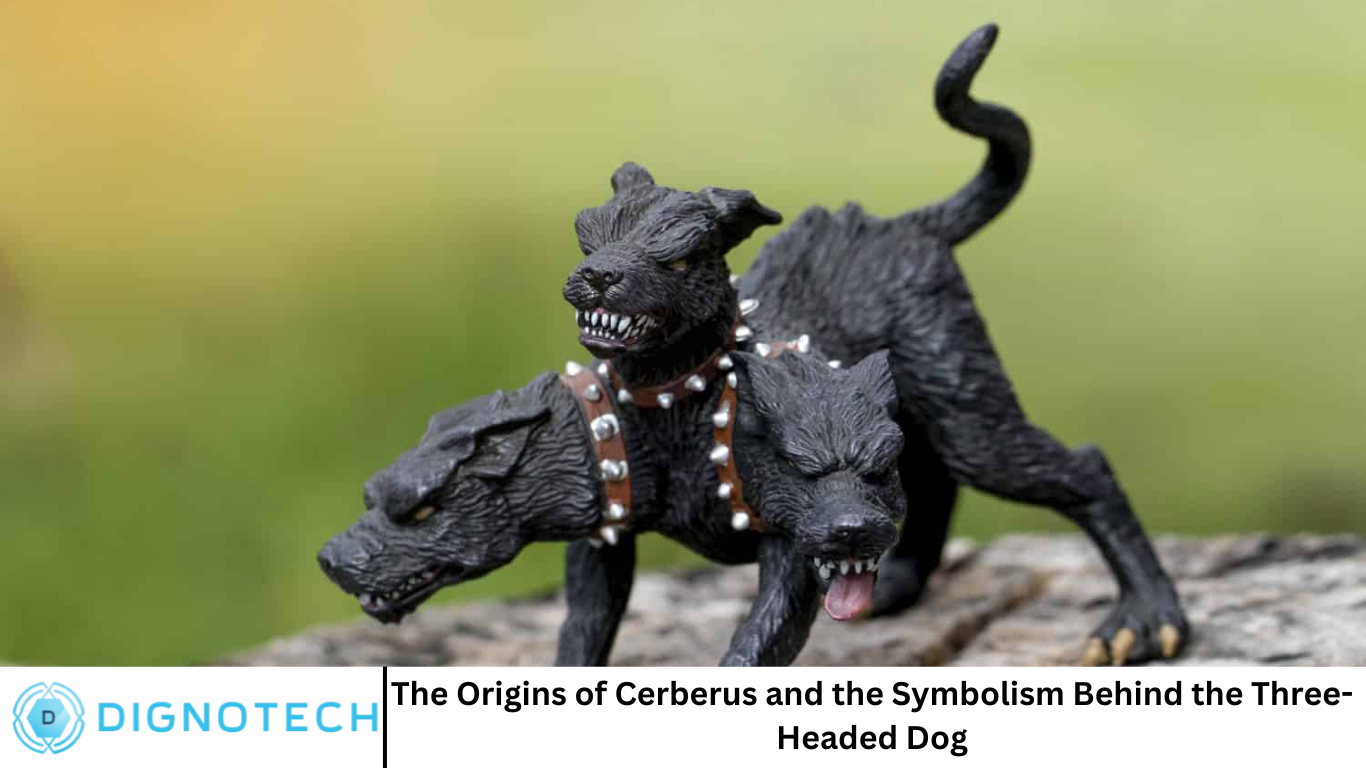The Origins of Cerberus and the Symbolism Behind the Three-Headed Dog

Hi everyone! How are you all doing? Welcome to dignotech.com! Cerberus, the three-headed dog of Greek mythology, is a creature as fearsome as it is iconic. Often depicted as a monstrous canine with multiple heads, a serpent’s tail, and the ability to guard the gates of the Underworld, Cerberus plays an essential role in various myths, most famously as the guardian of the realm of the dead. As a figure deeply entrenched in both the ancient and modern imagination, Cerberus is much more than just a mythical creature—he embodies a complex set of symbols and ideas central to the concepts of death, boundaries, and the cyclical nature of life.
In this article, we will explore the origins of Cerberus, his role within Greek mythology, the symbolism behind his three heads, and his continued relevance in contemporary culture. Through the lens of ancient Greek thought, we will also examine the deeper meanings of Cerberus, as he represents various aspects of the human experience—life, death, and the inevitable transition between them.
The Origins of Cerberus
Cerberus’ origins are rooted in the rich and often terrifying world of Greek mythology. He is the offspring of two of the most feared beings in Greek myth: Echidna, the half-woman, half-snake creature, and Typhon, the storm giant. Typhon, described as one of the deadliest creatures in Greek mythology, was said to have a hundred dragon heads, eyes that blazed like fire, and a body that stretched from the earth to the sky. Echidna, likewise a monstrous figure, was known as the “mother of all monsters,” giving birth to other legendary creatures, such as the Hydra, the Sphinx, and the Chimera.
Cerberus’ birth from these two fearsome beings places him within a legacy of monstrous creatures, intended for one purpose: to evoke fear and embody the chaos inherent in the ancient Greek understanding of the natural and divine world. However, while Cerberus’ monstrous lineage is essential to understanding his terrorizing nature, his purpose in the mythological framework was far more specific: to guard the gates of the Underworld and prevent both the living from entering and the dead from escaping.
The Role of Cerberus in Greek Mythology
As the guardian of the Underworld, Cerberus was tasked with preventing the souls of the dead from leaving and ensuring that no living person could enter the realm of the dead. His primary function was to serve Hades, the god of the Underworld, by acting as the ultimate boundary keeper. His role was crucial in maintaining the balance between life and death, ensuring that no soul could escape the afterlife, nor could the living intrude on the domain of the dead.
While Cerberus is frequently associated with his role as a guardian, his most prominent mythological appearance is in the Twelve Labors of Heracles. According to the myth, Heracles (or Hercules, as he is known in Roman mythology) was assigned a set of twelve difficult tasks by King Eurystheus. The last and most difficult of these tasks was to capture Cerberus and bring him back to the mortal world alive. This task was considered nearly impossible, as Cerberus was not only incredibly powerful, but also fiercely protective of his territory.
Heracles traveled to the Underworld and, after encountering various challenges, eventually managed to subdue Cerberus using his immense strength. However, rather than killing the beast, as was often the case with Heracles’ labors, he was instructed to bring Cerberus back alive. Heracles succeeded, and Cerberus was temporarily brought into the mortal world before being returned to his post as the guardian of the Underworld. This myth highlights Cerberus’ critical role in Greek mythology: a necessary figure who controls the passage between the living and the dead, a boundary that cannot be crossed without consequences.
Cerberus also makes appearances in other myths, such as the tale of Orpheus. In this myth, Orpheus travels to the Underworld to retrieve his wife, Eurydice, and is confronted by Cerberus at the gates. Orpheus, using the power of his music, is able to calm Cerberus and pass through. This encounter reinforces Cerberus’ symbolic role as a gatekeeper—a creature that controls the boundaries between realms and must be appeased or defeated for any passage to occur.
The Symbolism of Cerberus’ Three Heads
Cerberus is most famous for his three heads, which have fascinated scholars and mythologists for centuries. These three heads are not merely an artistic flourish but carry profound symbolic meanings, contributing to our understanding of Cerberus as a complex figure in Greek mythology.
The Triple Nature of Existence
One of the most prevalent interpretations of Cerberus’ three heads is that they represent the three stages of life: birth, life, and death. In many ancient cultures, the number three holds significant spiritual and philosophical importance, often associated with completeness or the full cycle of existence. Each head of Cerberus can be seen as symbolizing a different phase of human existence, and together, they reflect the inescapable nature of the life cycle.
The first head may represent birth or the beginning of life, the second life itself—the period of existence, where individuals experience the fullness of being—and the third head represents death, the inevitable conclusion of the cycle. This interpretation ties into the idea of death not as an end, but as a part of a larger, cyclical process. Cerberus thus becomes a representation of the inevitability of death and the continuity of life.
Vigilance and Protection
Another important interpretation of Cerberus’ three heads is that they symbolize his vigilance and watchfulness. Each head is capable of looking in a different direction, ensuring that Cerberus can guard the gates of the Underworld from all angles. This heightened awareness emphasizes Cerberus’ role as a protector and gatekeeper, keeping the realms of life and death separate and safe from intrusion.
This aspect of Cerberus as a vigilant guardian resonates with the ancient Greek understanding of boundaries. Just as the gods were believed to protect the limits of their domains, Cerberus’ role was to safeguard the threshold between the mortal world and the realm of the dead. The three heads, therefore, reinforce the idea that Cerberus is not merely a beast but a divine force that ensures the separation of life from death.
The Complexity of Death
Cerberus’ three heads also symbolize the complexity of death itself. In Greek mythology, death is not a simple cessation of life; it is a multifaceted transition that encompasses various stages and meanings. Each head may represent a different aspect of death: the first head might symbolize the finality of death, the second head the journey of the soul to the Underworld, and the third the continuing cycle of life and death that connects all beings. This interpretation suggests that death is not merely an end, but a complex, ongoing process that links the past, present, and future.
The Dual Nature of Cerberus
Finally, Cerberus’ three heads can be seen as representing his dual nature. On one hand, he is a terrifying and destructive creature, a monster of myth that evokes fear and danger. On the other hand, he serves an important and protective function, keeping the Underworld in balance and ensuring that the souls of the dead are properly contained. His three heads reflect this duality: one head may represent his monstrous, fearsome qualities, while another symbolizes his role as a protector, and the third head embodies the complexity and paradox inherent in his existence.
Cerberus in Modern Culture
Though Cerberus has its origins in ancient Greek mythology, its symbolism has endured throughout the centuries and continues to appear in modern culture. From literature to film and video games, Cerberus remains a compelling figure, representing both the fear of death and the necessity of guarding boundaries.
In modern depictions, Cerberus is often portrayed as a formidable adversary or obstacle, especially in works that deal with themes of the afterlife or the supernatural. In the Harry Potter series, for example, Cerberus is reimagined as Fluffy, a three-headed dog guarding the Philosopher’s Stone. While Fluffy is much less menacing than Cerberus in Greek mythology, his role as a protector of something valuable echoes Cerberus’ function as a guardian of the Underworld.
Cerberus also appears in video games, such as Dante’s Inferno, where he serves as a significant foe in the journey through Hell, and God of War, where he is one of the many challenges Kratos must face in his journey through the Underworld. These portrayals emphasize Cerberus’ enduring role as a symbol of the boundary between life and death, and his terrifying yet necessary role as a guardian.
Frequently Asked Question
Why does Cerberus have three heads?
Cerberus’ three heads symbolize various aspects of existence, including the cyclical nature of life, death, and rebirth. They also represent his vigilance as a guardian, ensuring that he can watch over the gates of the Underworld from all angles.
What is Cerberus’ role in Greek mythology?
Cerberus is the guardian of the Underworld, tasked with preventing the dead from escaping and the living from entering. His primary role is to protect the realm of the dead and ensure the separation of life and death.
How did Heracles capture Cerberus?
Heracles captured Cerberus as the final labor of his twelve tasks. He ventured into the Underworld and subdued Cerberus using his great strength, returning him alive to King Eurystheus as instructed.
What does Cerberus symbolize?
Cerberus symbolizes the boundaries between life and death, the inevitability of death, and the cyclical nature of existence. His three heads represent the complexity of death and the stages of life.
Who are Cerberus’ parents?
Cerberus is the offspring of Echidna, the half-woman, half-snake creature, and Typhon, the monstrous storm giant. Together, they produced several other fearsome monsters.
How is Cerberus depicted in modern culture?
Cerberus appears in modern literature, films, and video games, often as a guardian figure. In Harry Potter, God of War, and other media, he is portrayed as a powerful and fearsome guardian of important realms or treasures.
What is the significance of Cerberus in the myth of Orpheus?
In the myth of Orpheus, Cerberus is one of the obstacles that Orpheus must face in his journey to the Underworld. Orpheus uses his music to calm Cerberus, symbolizing the power of art to overcome death and its guardians.
Conclusion
In addition to these depictions, Cerberus remains a symbol of the inevitability and complexity of death, often used as a metaphor for the fears and uncertainties surrounding the afterlife. His three heads, in particular, continue to symbolize the interconnectedness of life, death, and rebirth, concepts that remain central to human understanding of existence.




